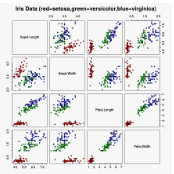An evaluation criterion for safe and trustworthy deep learning is how well the invariances captured by representations of deep neural networks (DNNs) are shared with humans. We identify challenges in measuring these invariances. Prior works used gradient-based methods to generate identically represented inputs (IRIs), ie, inputs which have identical representations (on a given layer) of a neural network, and thus capture invariances of a given network. One necessary criterion for a network's invariances to align with human perception is for its IRIs look 'similar' to humans. Prior works, however, have mixed takeaways; some argue that later layers of DNNs do not learn human-like invariances (\cite{jenelle2019metamers}) yet others seem to indicate otherwise (\cite{mahendran2014understanding}). We argue that the loss function used to generate IRIs can heavily affect takeaways about invariances of the network and is the primary reason for these conflicting findings. We propose an adversarial regularizer on the IRI generation loss that finds IRIs that make any model appear to have very little shared invariance with humans. Based on this evidence, we argue that there is scope for improving models to have human-like invariances, and further, to have meaningful comparisons between models one should use IRIs generated using the regularizer-free loss. We then conduct an in-depth investigation of how different components (eg architectures, training losses, data augmentations) of the deep learning pipeline contribute to learning models that have good alignment with humans. We find that architectures with residual connections trained using a (self-supervised) contrastive loss with $\ell_p$ ball adversarial data augmentation tend to learn invariances that are most aligned with humans. Code: \url{github.com/nvedant07/Human-NN-Alignment}.
翻译:安全和值得信赖的深层学习的评价标准是,由深神经网络(DNNs)的表述所捕捉的不一致性与人类共享的程度如何。 我们发现测量这些不一致性方面的挑战。 先前的作品使用梯度方法生成相同代表的输入( IRIs), ie, 投入( 在给定的层上) 相同代表神经网络, 从而捕捉给定网络的不一致性。 一个网络与人类感知一致的不一致性的必要标准是其IRIs的深度表现“ 相似” 。 然而, 先前的作品有喜忧参半; 一些争论称, 后期的 DNNNS的分层并不学习类似人类的不一致性输入( cite{jenelle2019mematers} ), 而其他的输入似乎表示不同( cite{mahendurnationrations) 的表达方式( 在给人际关系中, 使用人类学习模式的损耗损程度比重) 。 我们提议在IRI 生成的调常识中, 在人类的模型中, 使用任何人类的排序中, 都显示人类的模型会发现, 与人类的排序比重的模型更接近。




